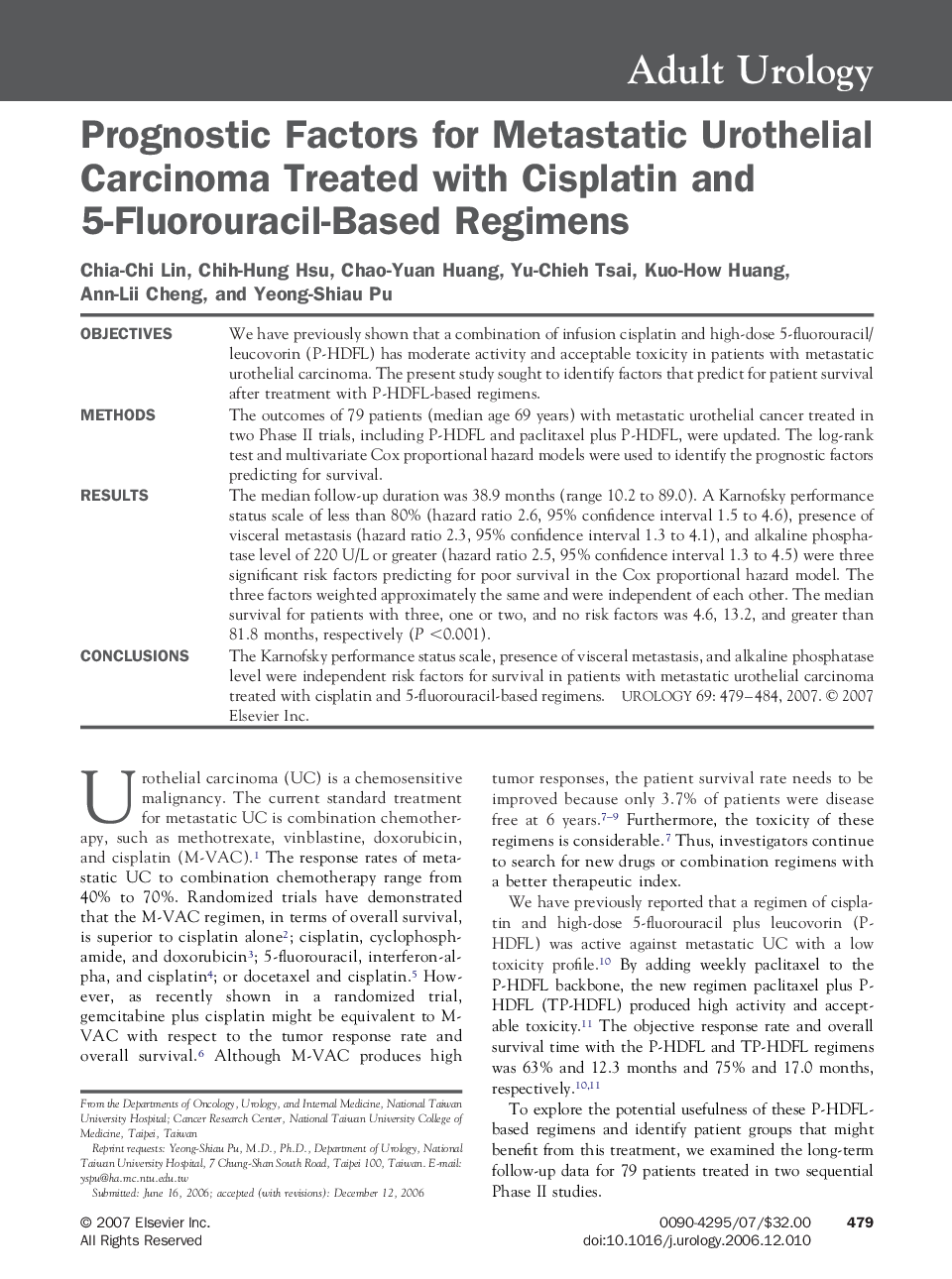| Article ID | Journal | Published Year | Pages | File Type |
|---|---|---|---|---|
| 3906380 | Urology | 2007 | 6 Pages |
ObjectivesWe have previously shown that a combination of infusion cisplatin and high-dose 5-fluorouracil/leucovorin (P-HDFL) has moderate activity and acceptable toxicity in patients with metastatic urothelial carcinoma. The present study sought to identify factors that predict for patient survival after treatment with P-HDFL-based regimens.MethodsThe outcomes of 79 patients (median age 69 years) with metastatic urothelial cancer treated in two Phase II trials, including P-HDFL and paclitaxel plus P-HDFL, were updated. The log-rank test and multivariate Cox proportional hazard models were used to identify the prognostic factors predicting for survival.ResultsThe median follow-up duration was 38.9 months (range 10.2 to 89.0). A Karnofsky performance status scale of less than 80% (hazard ratio 2.6, 95% confidence interval 1.5 to 4.6), presence of visceral metastasis (hazard ratio 2.3, 95% confidence interval 1.3 to 4.1), and alkaline phosphatase level of 220 U/L or greater (hazard ratio 2.5, 95% confidence interval 1.3 to 4.5) were three significant risk factors predicting for poor survival in the Cox proportional hazard model. The three factors weighted approximately the same and were independent of each other. The median survival for patients with three, one or two, and no risk factors was 4.6, 13.2, and greater than 81.8 months, respectively (P <0.001).ConclusionsThe Karnofsky performance status scale, presence of visceral metastasis, and alkaline phosphatase level were independent risk factors for survival in patients with metastatic urothelial carcinoma treated with cisplatin and 5-fluorouracil-based regimens.
